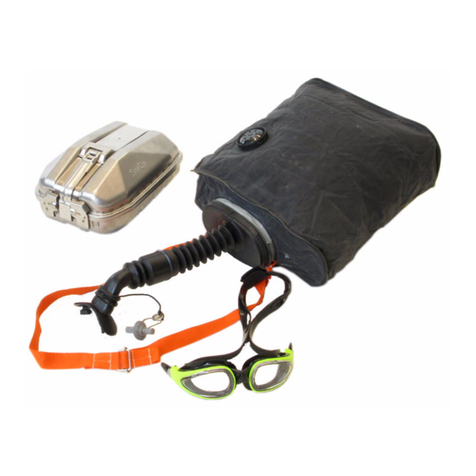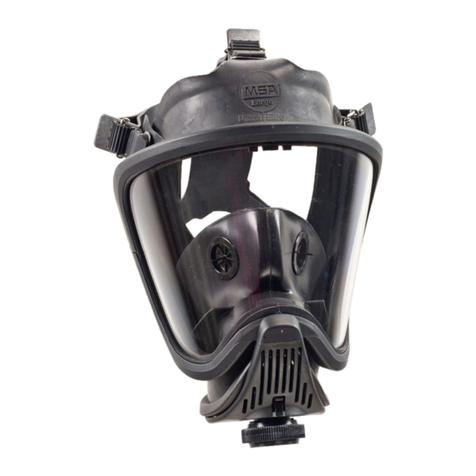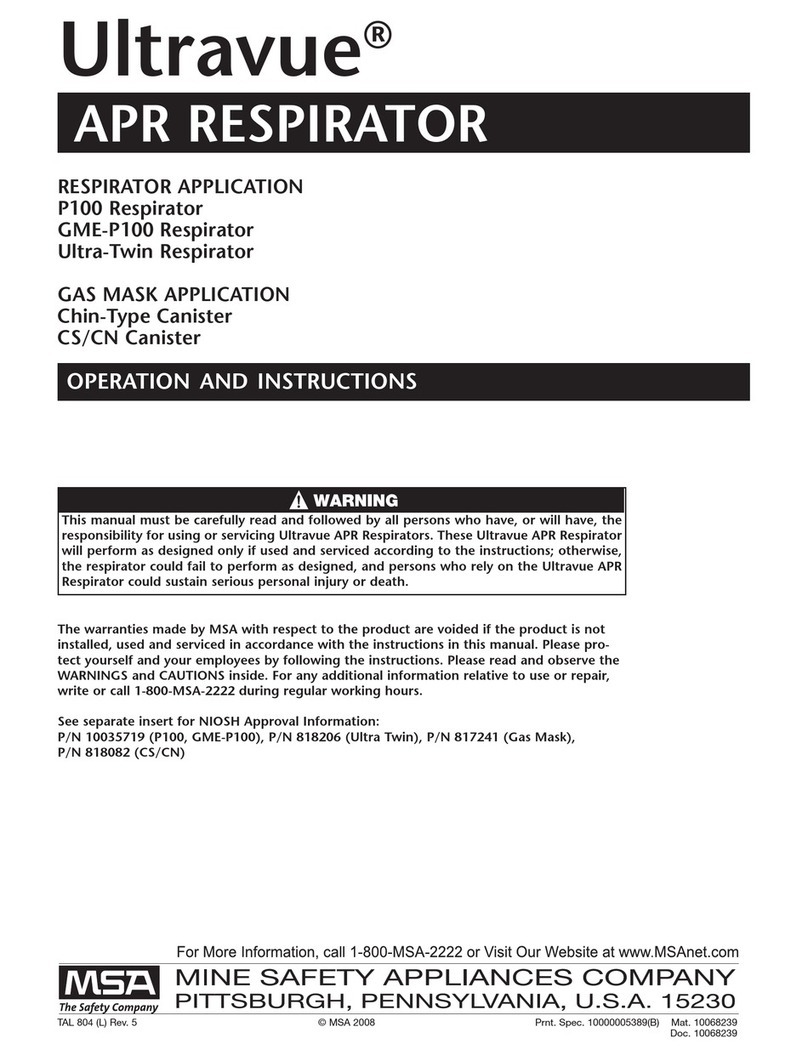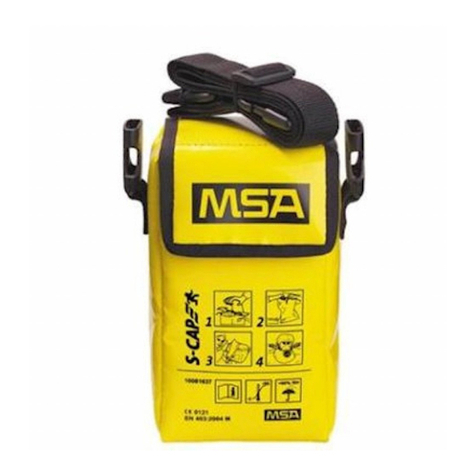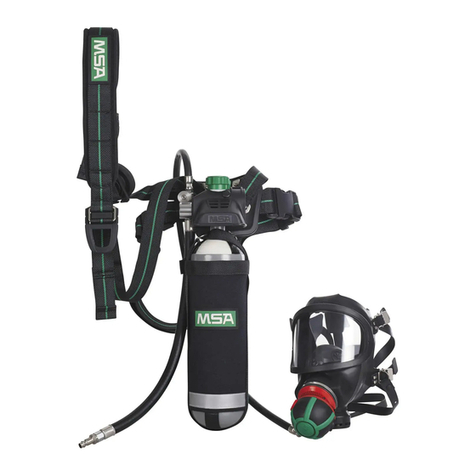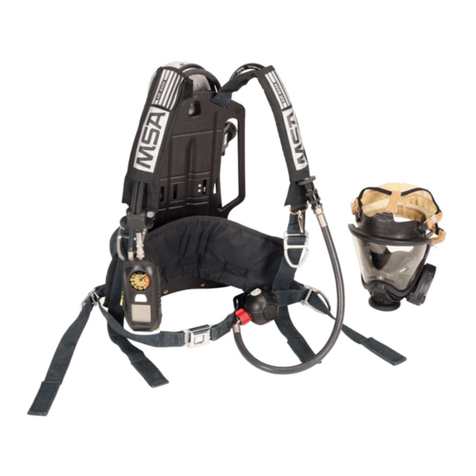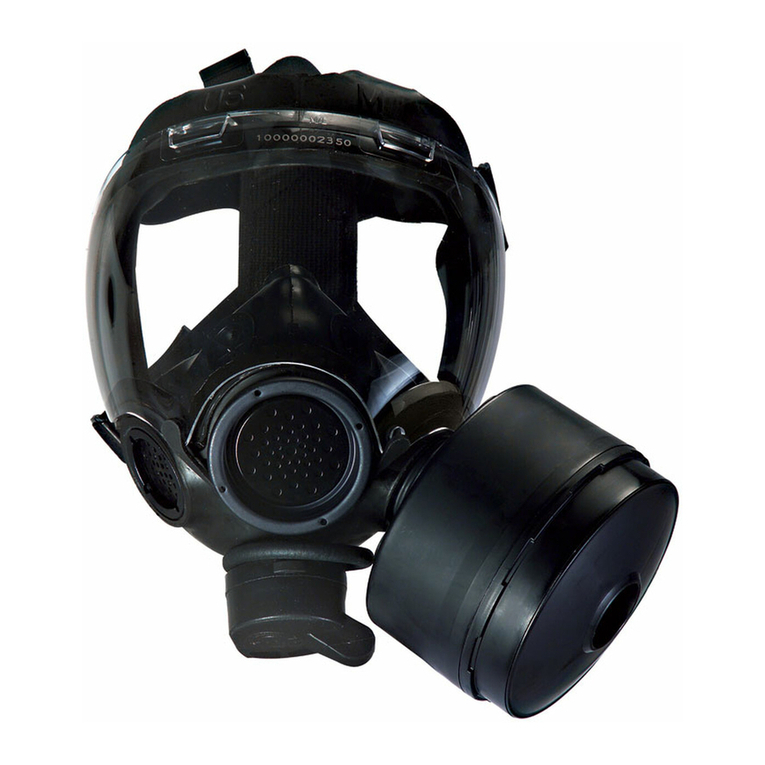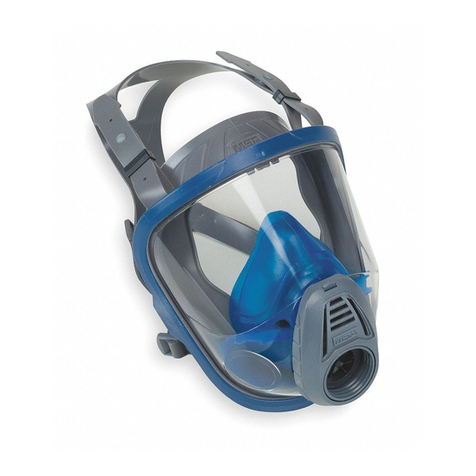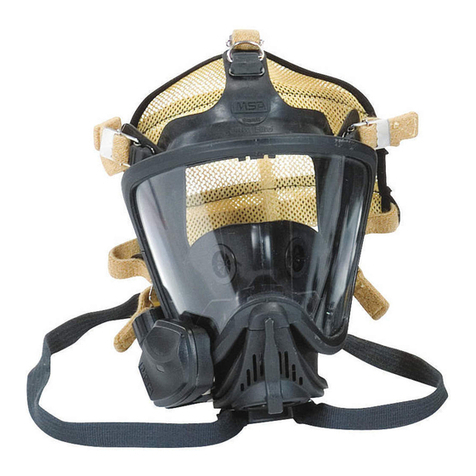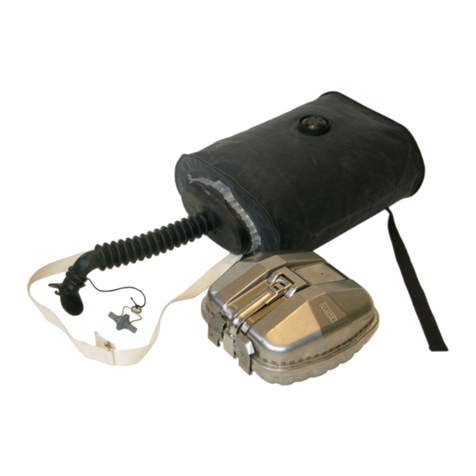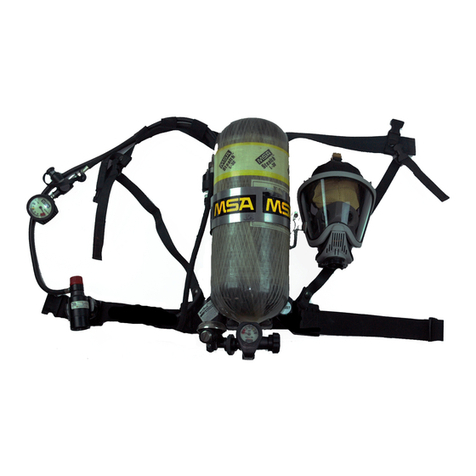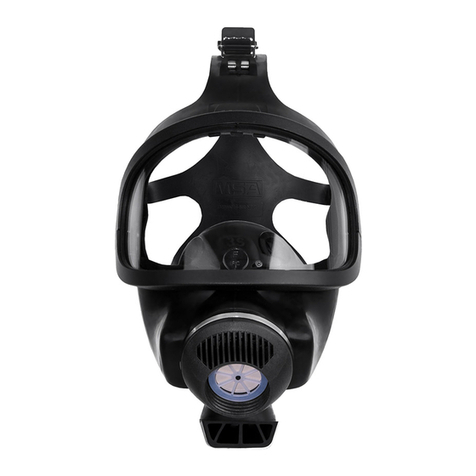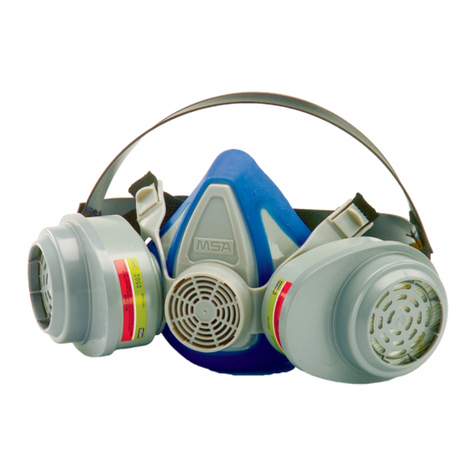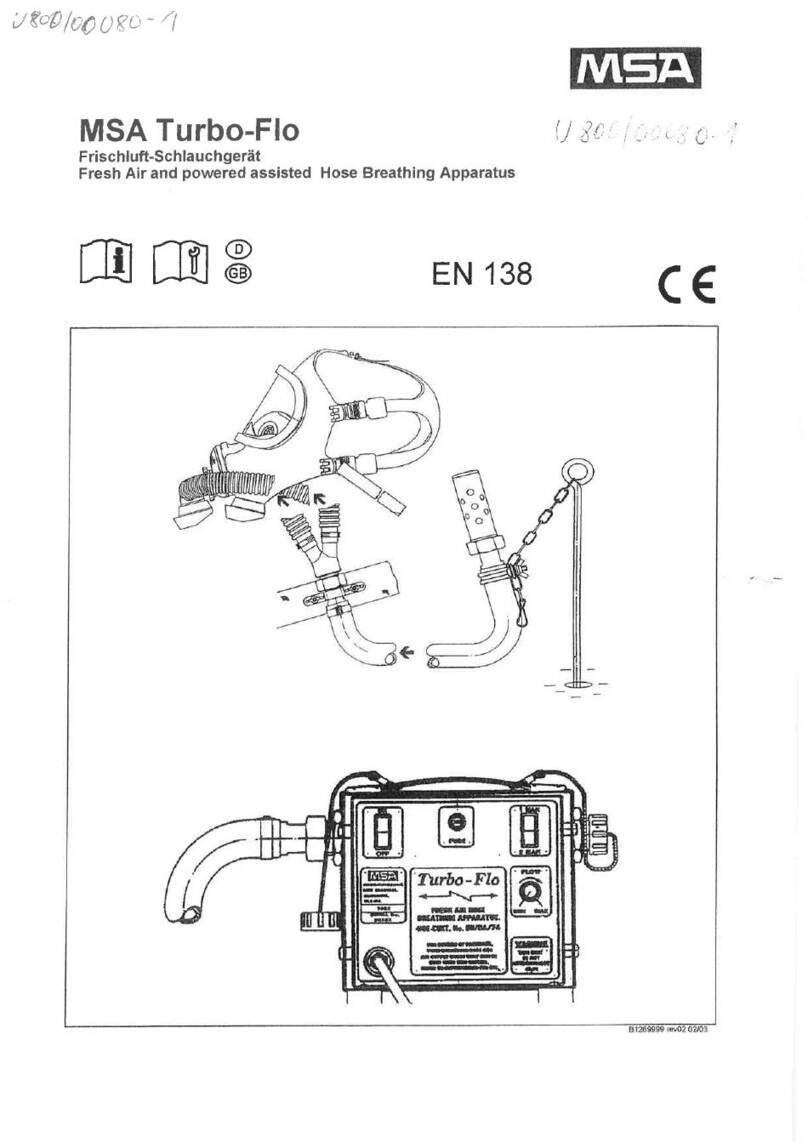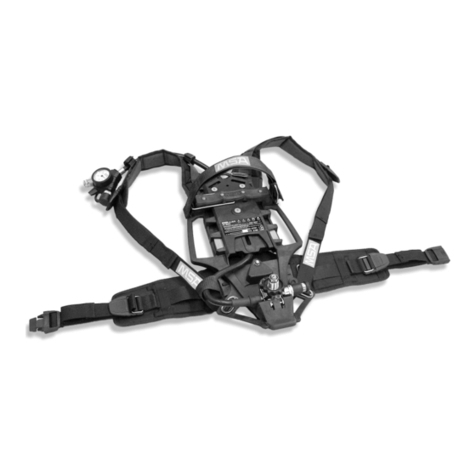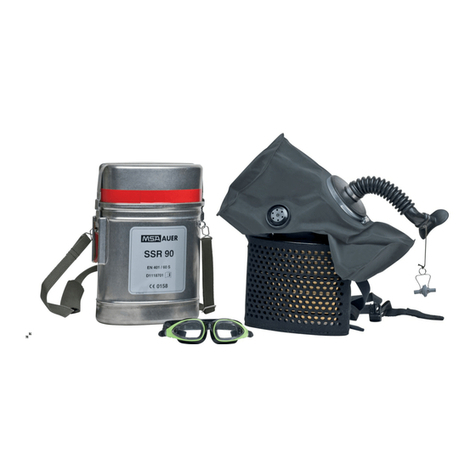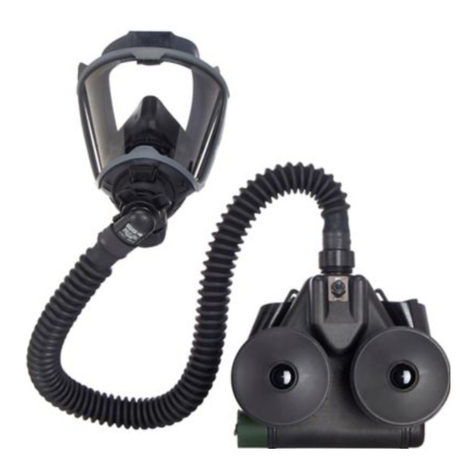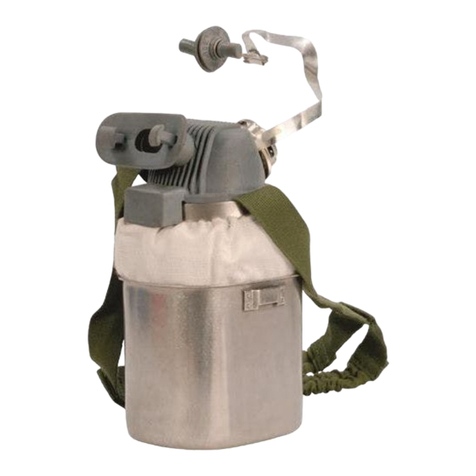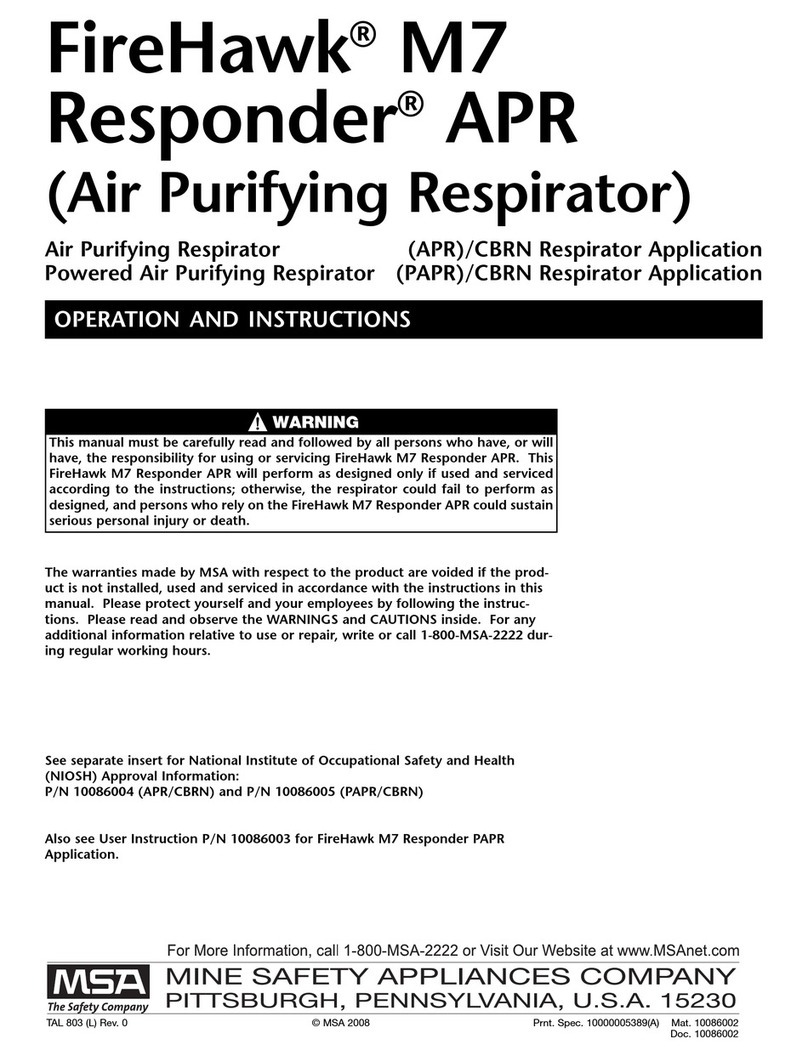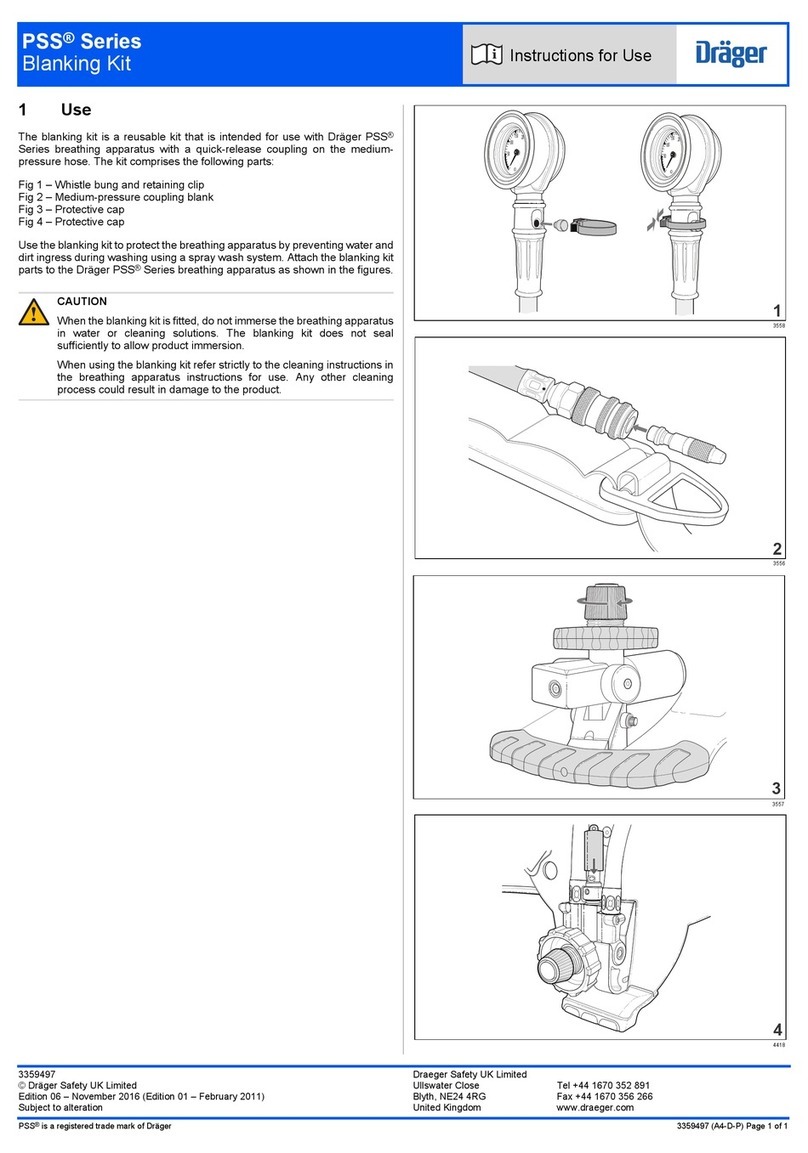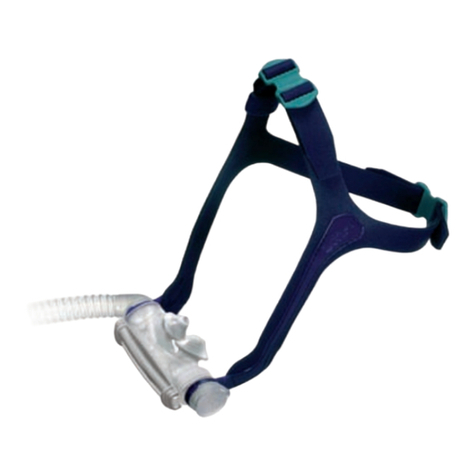NIOSH CAUTIONS AND LIMITATIONS
A- Not for use in atmospheres containing less than 19.5 percent oxygen.
B- Not for use in atmospheres immediately dangerous to life or health.
C- Do not exceed maximum use concentrations established by regulatory
standards.
H- Follow established cartridge and canister change schedules or observe ESLI
to insure that cartridge and canister are replaced before breakthrough occurs.
I- Contains electrical parts which have not been evaluated as an ignition source
in flammable or explosive atmospheres by MSHA/NIOSH.
J- Failure to properly use and maintain the product could result in injury or death.
L- Follow the manufacturer’s User’s Instructions when changing cartridges, canister
and/or filters.
M- All approved respirators shall be selected, fitted, used, and maintained in
accordance with MSHA, OSHA, and other applicable regulations.
N- Never substitute, modify, add, or omit parts. Use only exact replacement
parts as specified by the manufacturer.
O- Refer to User’s Instructions, and/or maintenance manuals for information on
use and maintenance of these respirators.
P- NIOSH does not evaluate respirators for use as surgical masks.
INSTRUCTIONS FOR USE AND CARE
OPERATING PRINCIPLE
This gas mask, when properly used, removes harmful gases, vapors (NIOSH
approved for CN, Chloroacetophenone and CS, Chlorobenzylidene
Malononitrile), and all particulate aerosols including oil-based aerosols (listed on
the canister label) from the inhaled air. Inhaled air is drawn through the canister
which contains chemicals and a P100 filter that remove or neutralize the conta-
minants. The air is then drawn through the facepiece, where it passes over the
lens (keeping it free of fog) before it is taken into the lungs. Exhaled air leaves the
facepiece through an exhalation valve and consequently is not rebreathed.
1. This device does NOT supply oxygen, and must be used only in ade-
quately ventilated areas containing at least 19.5 percent oxygen.
2. This respirator must be used in conjunction with the proper canister for
protection against specific contaminants.
3. Leave area immediately if:
A. Breathing becomes difficult.
B. Dizziness or other distress occurs.
C. You taste or smell contaminant.
D. You experience eye, nose, or throat irritation.
4. Use strictly in accordance with instructions, labels, and limitations per-
taining to this device.
5. This respirator may not provide a satisfactory seal with certain facial
characteristics, such as beards or large sideburns, that prevent direct
contact between the skin and the sealing surface of the facepiece. Do
not use this respirator if such conditions exist.
6. Never alter or modify this device.
7. This respirator is for use by trained, qualified personnel only.
8. The facepiece may not afford adequate protection against propelled or
falling missiles depending upon the force involved. Consequently, in riot or
2TAL 0011 (L) Rev. 7 - 814175
